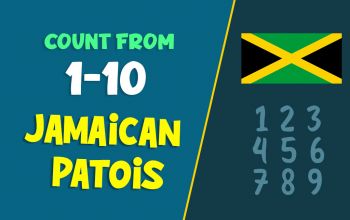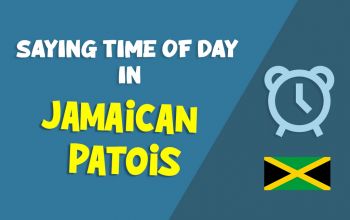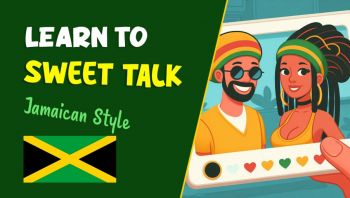Wah Gwaan! I’m excited to take you on a journey into the heart of Jamaica through its language, Jamaican Patois.
Jamaican Patois, often simply called Patwa, is more than just a dialect – it's the soul of Jamaican culture. This rich language, with its unique blend of African influences and English roots, is spoken by millions around the world.
Where Did Patois Come From?
Imagine a big pot where everyone’s throwing in different spices. That’s kind of how Patois was made. People from all over came to Jamaica and mixed their languages into this awesome way of talking we have now.
Jamaican Patois wasn’t just a random mix; it was crafted by the people’s shared experiences, their joys, and struggles and became the voice of Jamaica, a way to express their identity and unity. Today, when you hear Patois, you’re hearing the echoes of history, the stories of many lives woven into one language that’s as lively and dynamic as the people who speak it.
Let's Chat Patwah
This guide is designed to equip you with the basic skills needed to speak and understand Jamaican Patois. We’ll cover pronunciation, grammar, vocabulary, and more, providing you with practical knowledge to communicate effectively.
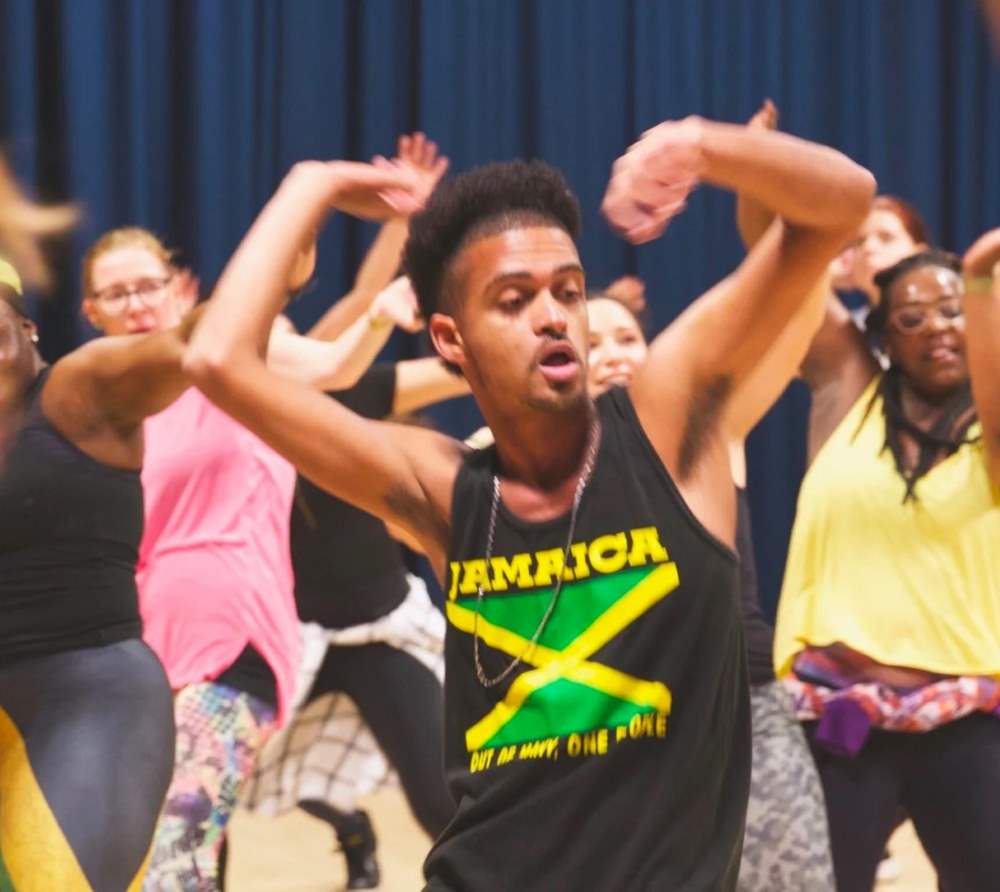
By the end of this journey, you'll be equipped to hold basic conversations, understand the nuances of Patwah, and gain a newfound appreciation for Jamaican culture.
Let's jump in and explore the colorful world of Jamaican Patois. Yuh ready fi dis? (Are you ready for this?).
Pronunciation: Mastering the Sounds
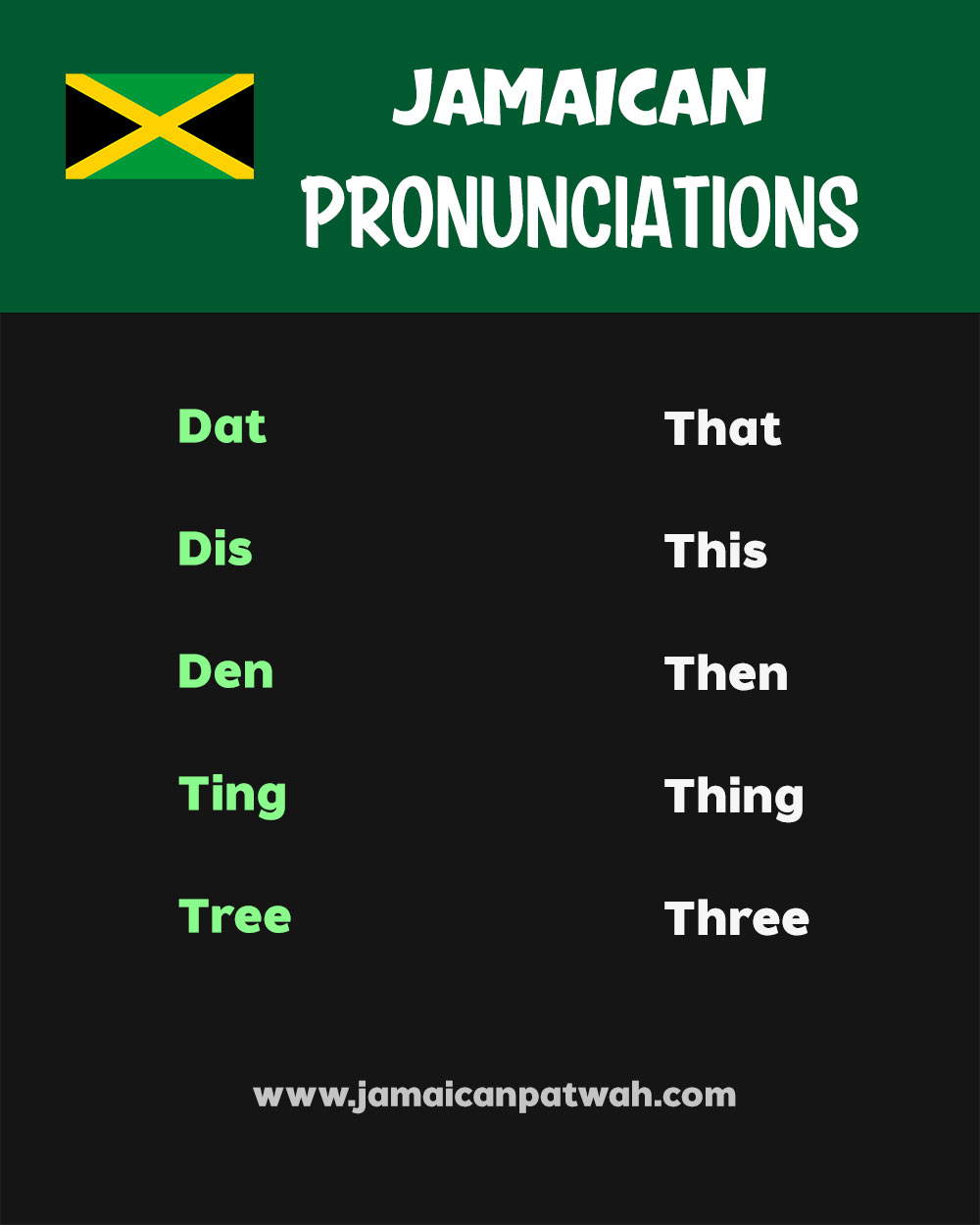 How to Pronounce Words like a Jamaican
How to Pronounce Words like a Jamaican Pronunciation is key to speaking Jamaican Patois authentically. Unlike Standard English, Patois has its own set of sounds that can be tricky but are essential to get right.
To start, let's focus on some of the standout sounds in Patois that you might not find in English:
The 'th' sound
This one's interesting because it often changes to a 'd' or 't' sound in Patois. So, "that" becomes "dat," and "think" becomes "tink."
Removing and Adding ‘H’
When it comes to Jamaican Patois, there are some unique rules around when to omit or add an 'h'. For starters, you might hear some Jamaicans leave out the 'h' at the beginning of certain words. So instead of saying "head", they might say "ed". On the flip side, they'll sometimes add an 'h' to words that start with a vowel. So "all" might become "hall".
The best way to learn these sounds is to hear them in action. I recommend listening to audio recordings of native speakers or using apps that provide phonetic transcriptions. This way, you can practice and compare your pronunciation with real examples.
Grammar: The Structure of Jamaican Patois
Grammar is the backbone of any language, and Jamaican Patois is no exception. In this section, we'll delve into the rules and patterns that give shape to Patois sentences. You'll learn about the essentials of subject-verb agreement, how plurals are formed, and the special features that make Patois unique.

Basic Structure
1. SUBJECT-VERB AGREEMENT
Sentences in Jamaican Patois are built like English sentences in that, there is a subject, a predicate (or verb), and an object. However, there is no subject-verb agreement in Jamaican Patois. The verb does not change with the subject. Let us look at the table below.
| Jamaican Creole | Standard English |
|---|---|
| Mi run | I run |
| im run | he runs |
| shi run | she runs |
| Wi run | We run |
| Dem run | They run |
| Unu run | You all run |
| eyah run | it runs |
| Yu run | You run |
2. Formation of Plurals
One common method of forming plurals in standard English is by adding 's' or; 'es' to the end of a word. (e.g. toy-toys, class- classes etc..)
However, in Jamaican Patois a word can be pluralized by adding 'dem' to the end word or, inserting 'nuff' or a number at the beginning of the word.
| Jamaican Creole | Standard English |
|---|---|
| Plate dem | Plates |
| Baby dem | Babies |
| Pen dem | Pens |
| Teacha dem | Teachers |
| Book dem | Books |
| Nuff banana | Many bananas |
| Ten bwoy | Ten boys |
NOTE: In Jamaican Patois, the letters '-s' or '-es' do not necessarily denote plurality as is shown in the examples below:
| Jamaican Creole | Standard English |
|---|---|
| Waan shoes | A shoe |
| Waan drinks | A drink |
Subcribe to Our Youtube Channel
Learn Jamaican Patois & Get more of the Jamaican Vibe with our easy to follow video lessons.
Subscribe3. USE OF PRONOUNS
In Jamaican Patois:
- There is no differentiation in the use of pronouns to show gender. The pronoun 'im' can mean both or either 'he' or 'she'.
- There is no distinction between subject and object.
| Jamaican Creole | Standard English |
|---|---|
| Female - im frack look gud | Her frock (dress) looks good |
| Male - im fada gaan | His father is gone |
| Subject - mi a guh | I am going |
| Object - come fi mi | Come for me |
Denoting a 'person' in Jamaican Patois differs from Standard English in the following ways:
| Jamaican Creole | Standard English | |
|---|---|---|
| Person Speaking (first person) | ‘Mi’ or 'wi’ | 'I' or 'we' |
| Person being spoken to (second person) | 'yu' or'unu' | 'you' or 'you all' |
| Person being spoken about (third person) | ‘im’ or ‘dem’ | “he /she” or “them” |
There are no possessive pronouns in the Jamaican Patois such as your, her, his, its, ours and theirs, for example:
| Jamaican Creole | Standard English |
|---|---|
| Fi mi backle | My bottle |
| Fi yu backle | Your bottle |
| Fi dem backle | Their bottle |
Unique Features
4. USE OF THE COPULA
The copula is a connecting word; for example, in Jamaican Patois the copula is the letter 'a' which is used for the particle as well as for the continuous tense.
For example:
| Jamaican Creole | Standard English |
|---|---|
| Im a run | He is running |
| Im a guh fi it | He is going for it |
| Mi a teacha | I am a teacher |
5. USE OF REPETITION/REDUPLICATION
In Jamaican Patois:
Repetition is used for degrees of comparison as well as emphasis; for example, using Jamaican Patois to talk about how big a child has become:
| Jamaican Creole | Standard English |
|---|---|
| Di bwoy big, eeh! | The boy has grown |
| Fi real, im big-big! | For real, he is very big |
| A true! Him get big-big | It is true, he has gotten big |
6. USE OF DOUBLE NEGATIVES
In Standard English it is never acceptable to use double negatives such as 'nobody does not'. However, in• Jamaican Patois double negatives are accepted.
| Jamaican Creole | Literal Translation | Standard English |
|---|---|---|
Mi nuh have nun |
I don’t have none |
I don't have any |
Shi don't have nothing |
She doesn’t have nothing |
She doesn't have anything |
Dem don't live dere nuh more |
They don’t live there no more |
They don't live there any more |
Mi nah guh.nuh weh |
I am not going no where |
I am not going anywhere |
Nobady neva see’m |
Nobody never saw him |
Nobody saw him |
Nobady nuh live ova deh |
Nobody doesn’t lives over there |
Nobody lives over there |
7. COMPOUND WORDS
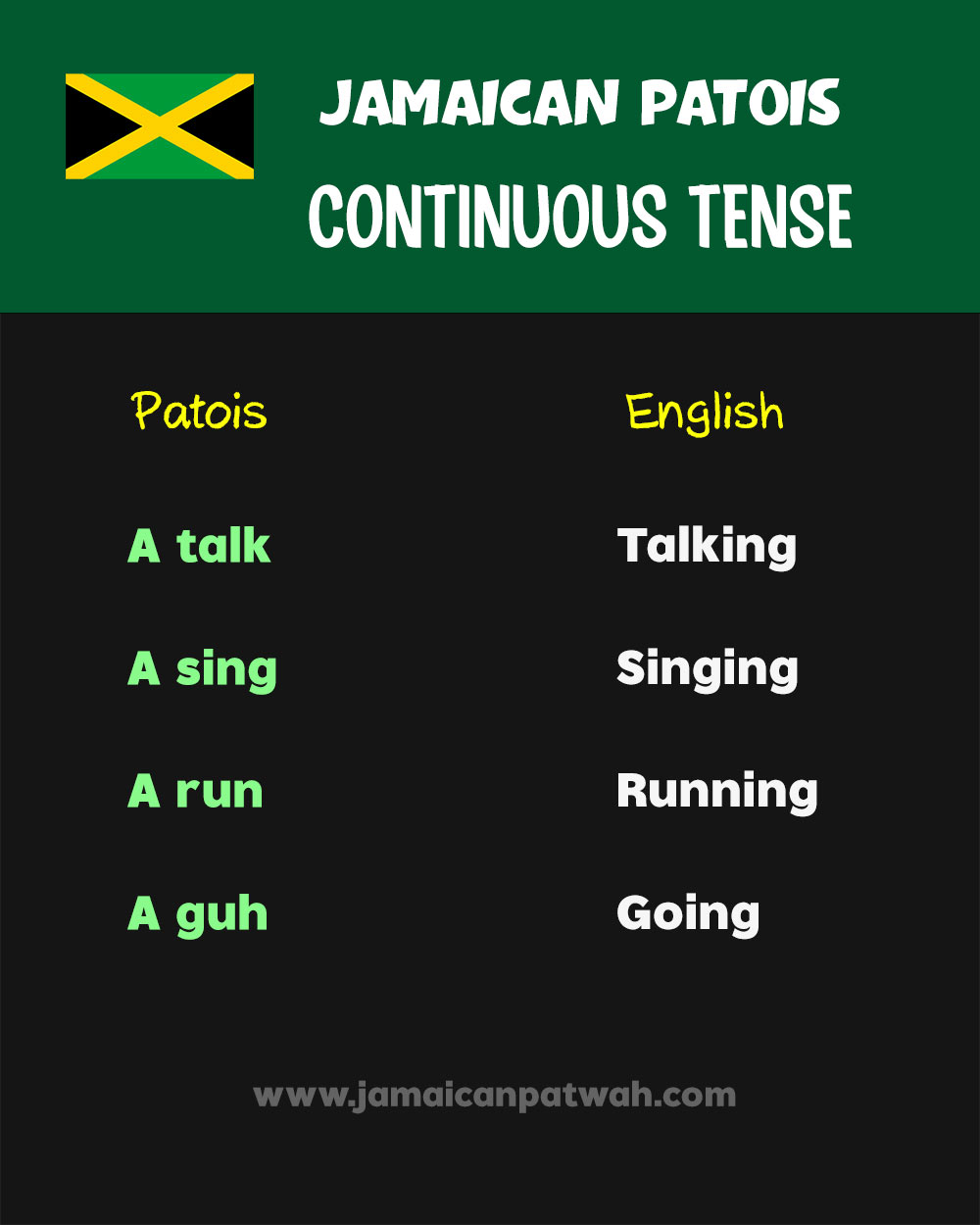
Compound words are commonly used in Jamaican Creole; for example:
| Jamaican Creole | Literal Translation | Standard English |
|---|---|---|
Han miggle |
Hand middle |
The palm (of your hand) |
Hiez-ole |
Ear hole |
The ear or the auditory passage |
Bwoy Pickney |
Boy Child |
A Young boy |
Foot battam |
Foot bottom |
The sole (of your foot) |
Nose-ole |
Nose hole |
Nostril |
Yeye-Wata |
Eye Water |
Tears |
Yeye-ball |
Eye ball |
Eye |
8. Tense
Unlike Standard English, in the Jamaican Creole, the verb does not change. Instead a new word is introduced and placed in front of the verb; for example:
Present Tense:
| Jamaican Creole | Standard English |
|---|---|
| Mi guh | I am going |
| Di ooman a guh a town | The woman is going to town |
| Im a cum | He is coming |
| Mi a cum | I am coming |
Past Tense:
| Jamaican Creole | Standard English |
|---|---|
| Mi did guh | I went |
| Di ooman did guh a town | The woman went to town |
| Im did cum | He came |
| Mi did cum | I came |
In Jamaican Creole, past tense is formed by using one of the following three words: 'en', 'ben' and 'did', whereas in Standard English the verb is changed or "e" or "ed" is added ; for example, collect-collected, run-ran, buy-bought, etc…
Vocabulary of Jamaican Patois
Vocabulary is the cornerstone of any language, and in Patois, it's no different. This section will introduce you to the words and phrases that are essential for everyday communication in Jamaican Patois.
Common Words and Phrases
Here's a table of common English words alongside their Patois translations, which will help you start building your Patois vocabulary:
| English | Jamaican Patois |
|---|---|
| Hello | Wah Gwaan |
| Goodbye | Likkle more |
| Please | Pleez |
| Thank You | Tank You |
| Yes | Yeh/Yah |
| No | Nuh |
| Friend | Fren |
| Water | Wata |
| Love | Luv |
Greetings and Common Expressions
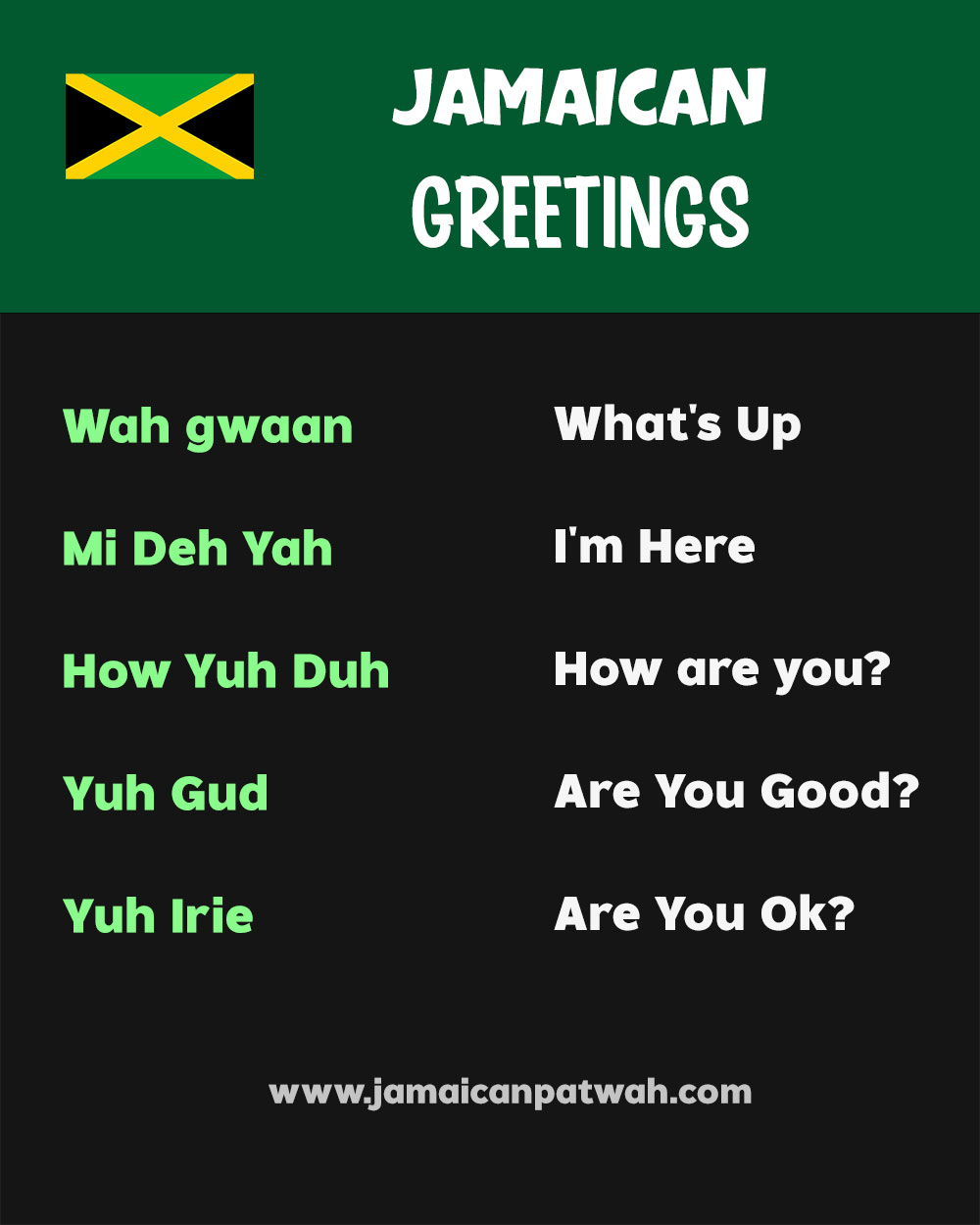
Familiarize yourself with these Patois greetings and expressions to sound like a native when you meet someone:
- Good morning: “Mawnin”
- How are you: "How yuh duh?"
- I'm fine, thank you: “Mi deh yah, tank yuh”
- What's happening?: “A weh yuh a seh?”
With this vocabulary list, you're well on your way to holding conversations in Jamaican Patois. Remember, practice is key, so try using these words and phrases as much as possible to become more comfortable with them. Soon, you'll be able to express yourself with the same ease as a local!
Understanding When and Where to Use Patois
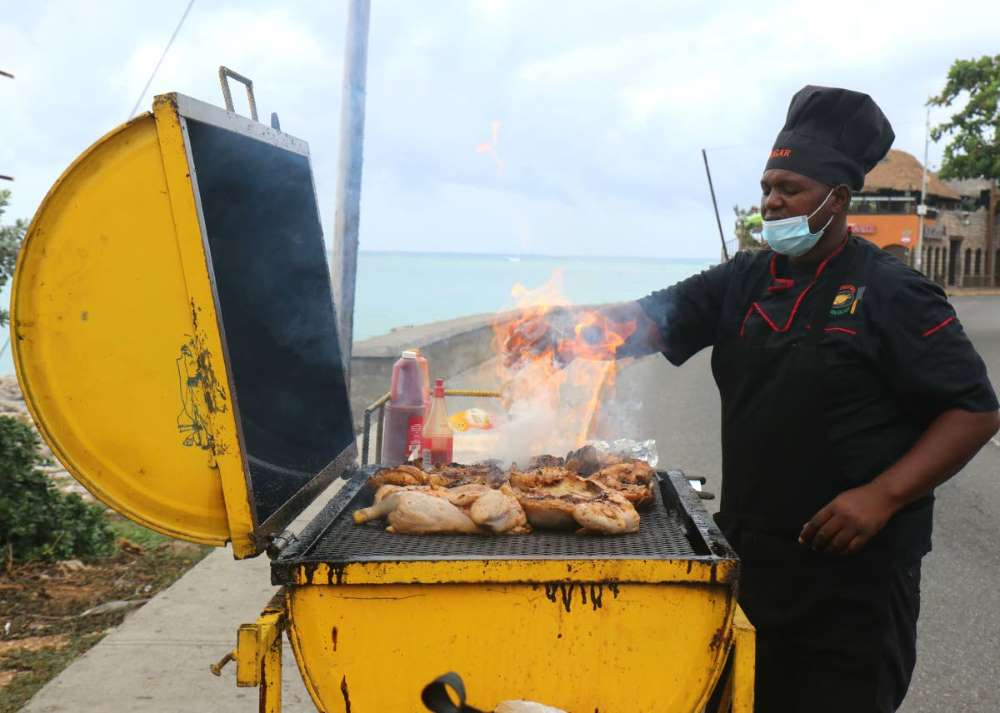
Language is deeply intertwined with culture, and Jamaican Patois is a reflection of the island's social fabric. This section will guide you through the appropriate use of Patois in various settings, helping you navigate the social landscapes of Jamaica with ease.
Contextual Usage
Patois is used in a range of contexts, from casual conversations among friends to more formal settings. Here's how to adjust your Patois accordingly:
- Casual Settings: Feel free to use slang and idiomatic expressions. For example, "Mi soon come" means "I'll be right back."
- Formal Situations: Stick to more standard phrases and avoid slang. Instead of "Wah gwaan," use "How are you doing?"
Social and Cultural Nuances
Understanding the cultural nuances of Patois can help you communicate more effectively:
- Respectful Address: Use "Miss" or "Missah(Mister)" followed by the person's first name to show respect.
- Greetings: It's common to greet everyone when entering a room, not just the people you know.
- Non-Verbal Communication: Body language and tone are important in Patois. A friendly tone and a smile can go a long way.
Remember, language is more than words—it's about understanding and respecting the culture that gives rise to it.
Common Mistakes and Tips

As with learning any language, you're bound to encounter some challenges along the way. This section will highlight common mistakes learners of Jamaican Patois often make and provide tips to help you overcome them.
Learning Challenges
Here are some frequent errors to watch out for:
- Overusing Slang: While slang is an integral part of Patois, using it inappropriately or too often can lead to misunderstandings, especially in formal contexts.
- Literal Translations: Directly translating phrases from English to Patois can result in errors. Patois has its own idiomatic expressions that don't always align with English.
Tips for Mastering Pronunciation and Grammar
To help you master Patois, consider these tips:
- Practice Regularly: Consistent practice is key. Try to use Patois in your daily life, even if it's just talking to yourself.
- Learn in Context: Understand the meanings of words and phrases within the context of conversations to grasp their proper usage.
By being aware of these common mistakes and applying the tips provided, you'll be better equipped to navigate the intricacies of Jamaican Patois. Keep practicing, stay patient, and enjoy the process of learning this expressive language.
Additional Resources
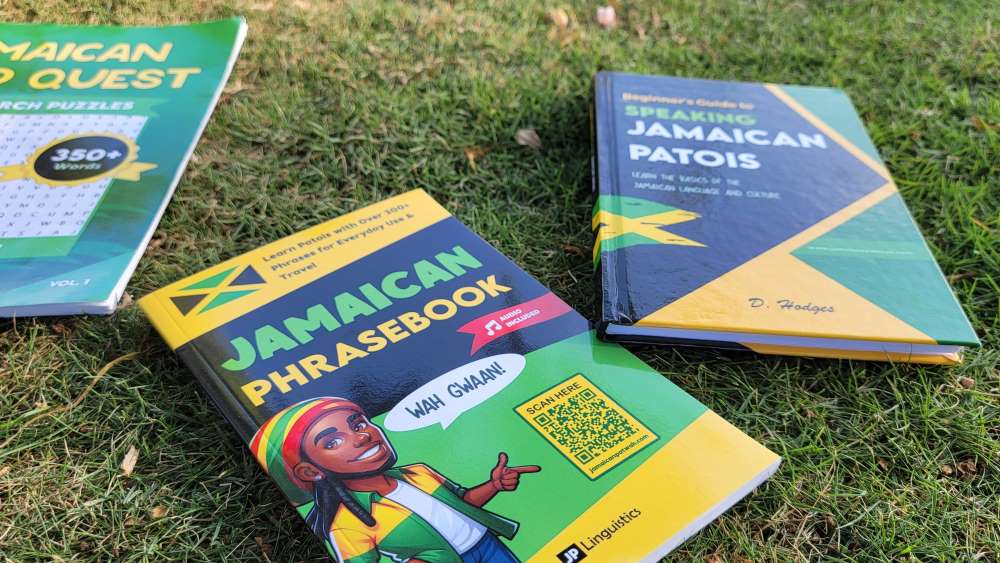
Our Book Series on Speaking Patois
Our book series offers an in-depth exploration of Patois, from basic phrases to complex expressions. Each book is tailored to different learning stages, ensuring that whether you're a beginner or looking to refine your skills, there's a guide for you.
Jamaican Patwah Dictionary
Our online dictionary is a treasure trove of Patois vocabulary. It's constantly updated with new words and phrases, complete with definitions and usage examples
Jamaican Patois Translator
When you need to translate between English and Patois, our translator tool is here to help.
These resources are more than just tools; they're a gateway to embracing the Patois language and connecting with Jamaican culture on a deeper level. Use them to practice, explore, and discover the joy of speaking Patois with confidence.



